Gothenburg isn’t just pretty facades and canals. It’s a city built on commerce, ambition and ruin, and if you know where to look, you’ll feel the ghosts of those exploits.
Walk these stones, climb those stairs and let the wind from the river remind you that Gothenburg didn’t happen by accident. It was fought for with rifles, negotiated over strong drink, burned down, rebuilt and repurposed again and again. This isn’t a city that just looks pretty on postcards, it’s a place that earned its beauty in blood, salt and ambition.
Here are the places you should explore, if you want to taste the salt-and-stone history of Gothenburg.
Älvsborgs slott
Before Gothenburg was Gothenburg, there was this: a grim stone sentinel at the mouth of the river. Älvsborgs slott (Old Älvsborg Fortress) was the original defense structure in the area, protecting the original settlement of Lödöse further inland, which in turn was superseded by New Lödöse located close to the present day city location.
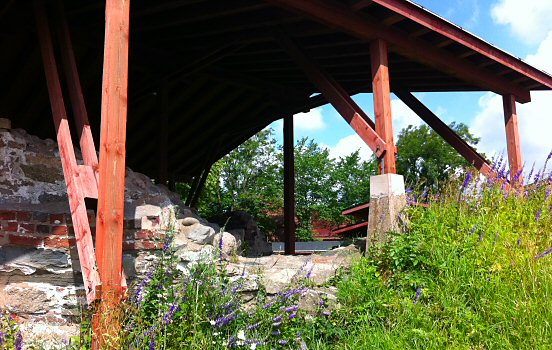 Ruins from Älvsborgs slott.
Ruins from Älvsborgs slott.
The first building on the site was created around 1366, but the early wooden castle was burned by the Danish forces in 1502. During the 1520s it was upgraded to a stone castle by king Erik XIV. This is also where the Swedish king Gustavus Adolphus lived in March 1619, when he decided to found a new city called Gothenburg.
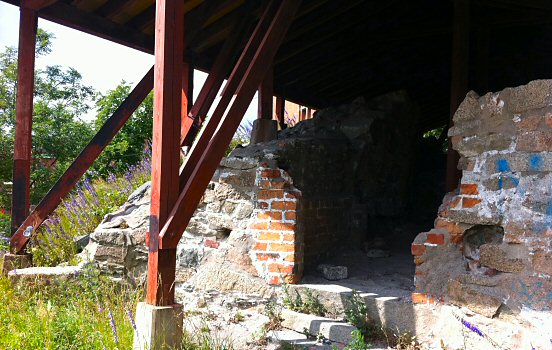 Ruins from Älvsborgs slott.
Ruins from Älvsborgs slott.
In 1660 it was demolished to be replaced by Nya Älvsborg, build on an island in the archipelago. Material from the original castle was used and today only scattered ruins remains.
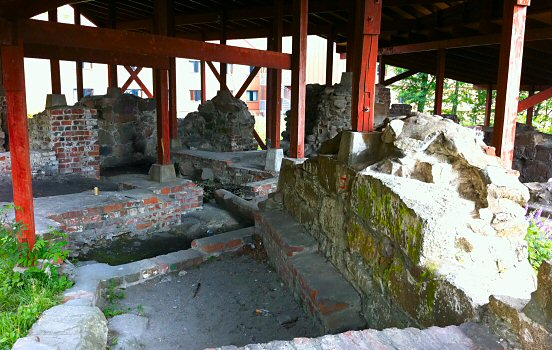 Ruins from Älvsborgs slott.
Ruins from Älvsborgs slott.
Nya Älvsborg
Nya Älvsborg (New Älvsborg Fortress) was the replacement for Älvsborgs slott, built with material from the old castle. Located on the small island Kyrkogårdsholmen near the harbor entrance of Gothenburg, it became of vital strategic importance and construction began in 1653 to provide protection from the Danish forces.
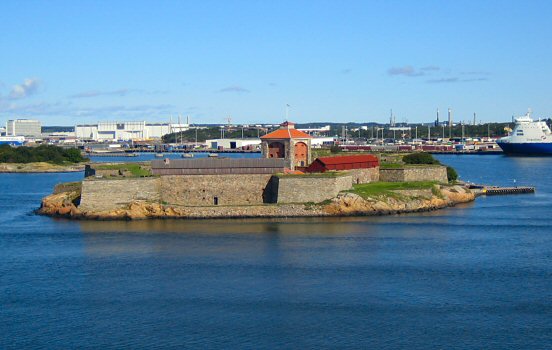 The fortress at Kyrkogårdsholmen.
The fortress at Kyrkogårdsholmen.
The fortress was later used as a prison until 1866. A settlement in New Sweden near Delaware River in North America, Fort Nya Elfsborg, was named after this fortress, but abandoned in 1655.
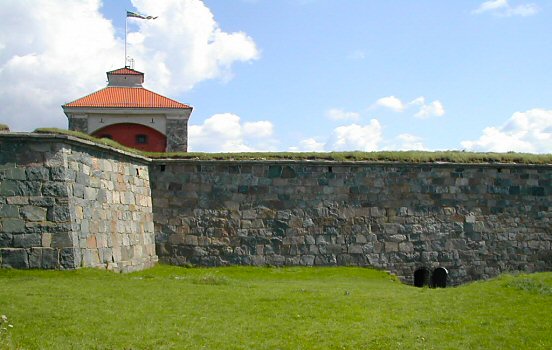 Fortress walls.
Fortress walls.
Many structures still have cannon balls in the walls from the Danish attack in 1719 during the Great Northern War. Most notable is the church, which was hit by a cannon ball during prayer sermon in 1719. The twelve pound ball entered through a window and hit the wall, where it still remains today.
 Cannonball from the 1719 attack, still embedded in the church wall.
Cannonball from the 1719 attack, still embedded in the church wall.
Färjenäs
The area of Färjenäs, close to the northern abutment of Älvsborgsbron, is the predecessor to Gothenburg city. It was founded by King Karl IX in 1603 and often referred to as “Karl IX’s Gothenburg”. It was a settlement mostly composed of Dutch on a strategic location across the river from Älvsborgs slott. Hundreds of houses were quickly build, but unfortunately all of it was burned to the ground in 1611 by Danish forces, after only eight years in existence.
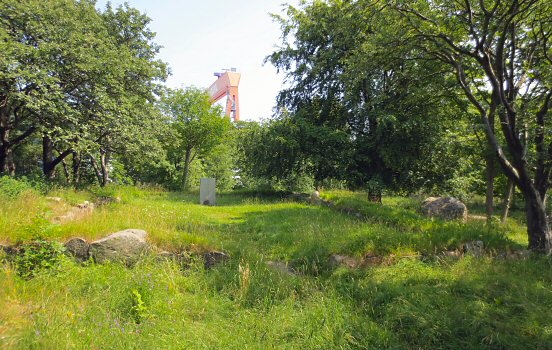 This church ruin from early 17th century is one of very few remains.
This church ruin from early 17th century is one of very few remains.
The nearby area called Kvarnberget (not to be mistaken for the hill with the same name located in Västra Nordstan) used to have gardens and settlements, most of which were removed in the 1960s. Remains of the old stone walls are well preserved along Salterigatan.
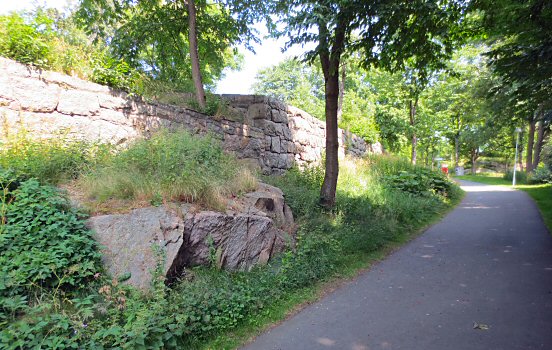 Old stone walls along Salterigatan.
Old stone walls along Salterigatan.
Landmarks of the modern city can be seen through the one-time gardens at Kvarnberget.
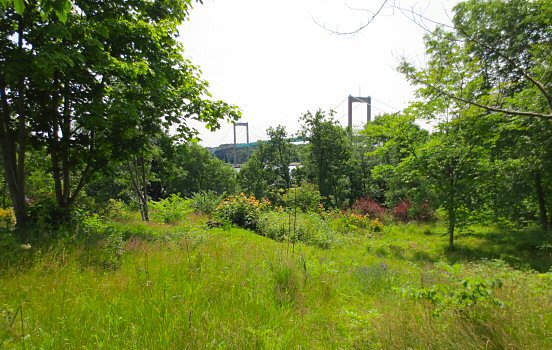 The one-time gardens at Kvarnberget.
The one-time gardens at Kvarnberget.
The area was named after the ferry, which was a link to Älvsborgs slott on the opposite side of the river. The old ferry ran until 1967, as it became obsolete after the construction of nearby Älvsborgsbron.
 The old ferry slip.
The old ferry slip.
Kronhuset
Kronhuset is said to be the oldest building in Gothenburg, even though Torstensonska palatset may share the same claim. It was constructed in 1655 and used as storage facility for military equipment.
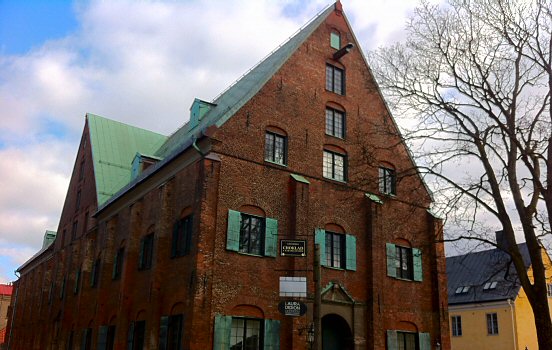 Kronhuset, exterior.
Kronhuset, exterior.
The area around Kronhuset is the closest thing to an Old Town of Gothenburg. Unfortunately there was a great fire in 1793 and all the old houses were reduced to ash, except for Kronhuset. It was decided that new houses should be constructed in stone materials, which are the ones we can see today. The Dutch bricks of the first floor still bear visible traces of the fires of the 18th century.
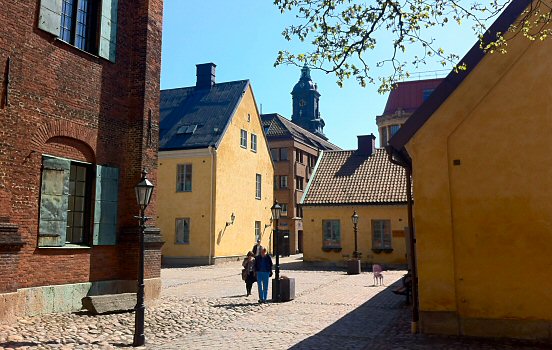 Kronhuset area.
Kronhuset area.
Kronhuset was once used as temporary riksdag (national legislative assembly) in 1660 by King Karl X Gustav. He died later in the same year and his four-year-old son Karl XI was carried inside Kronhuset to be appointed as new king of Sweden.
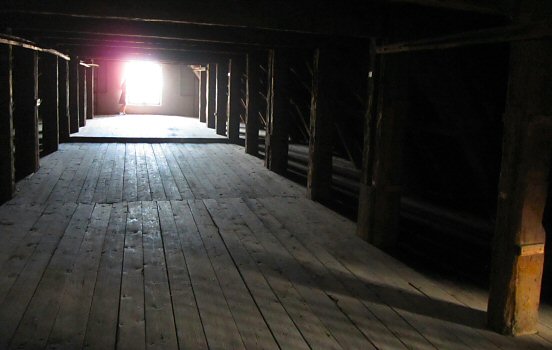 Top floor of Kronhuset.
Top floor of Kronhuset.
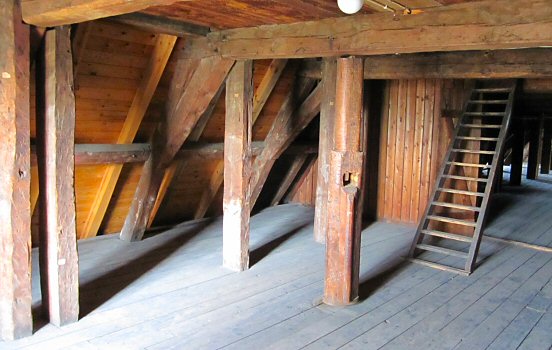 Notice the wooden pillar once used to haul up materials.
Notice the wooden pillar once used to haul up materials.
Torstensonska palatset
Torstensonska palatset (also known as Residenset) from 1650 is one of the oldest buildings in Gothenburg. It has seen a fair share of prominent guests, such as Karl X Gustav who died in the house 1660. This is also where Karl XII was planning his war campaign on Norway, and Gustav III used the house during the Theatre War in 1788.
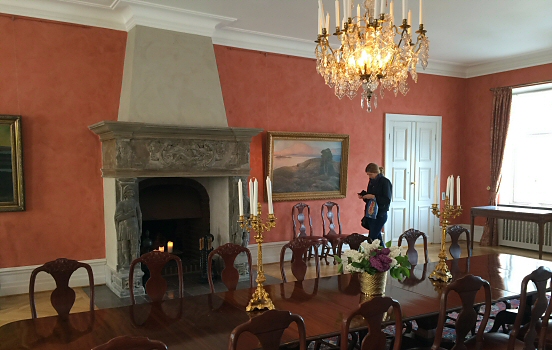 Torstensonska palatset, exterior.
Torstensonska palatset, exterior.
 Torstensonska palatset, garden.
Torstensonska palatset, garden.
The wall
In 1624 the Swedes began construction of heavy defense structures around Gothenburg. With a bit of help from Dutch engineers, they created one of the most fortified cities in Northern Europe.
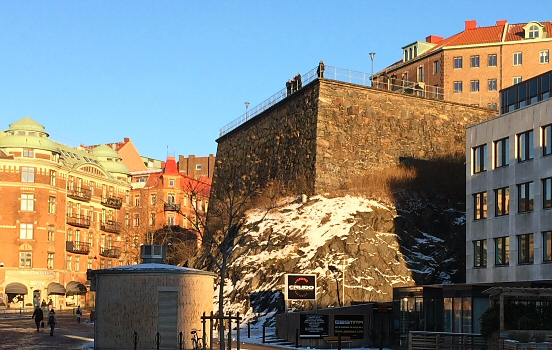 Carolus Rex above Esperantoplatsen.
Carolus Rex above Esperantoplatsen.
The wall was demolished in early 19th century and very little remains of it. As far as I know, it can only be seen at these locations:
- Carolus Rex above Esperantoplatsen: This is by far the largest section remaining and the only one that resembles a wall. The bastion offers a great view as well.
- Biopalatset: A big section is dominating the lower floor of the cinema.
- Parking space beneath Pedagogen: A small section can be seen through a glass window.
- Excavated remains at Residensbron. This was discovered during construction work in late 2013, but there are plans to make it permanently viewable later on through a subterranean window.
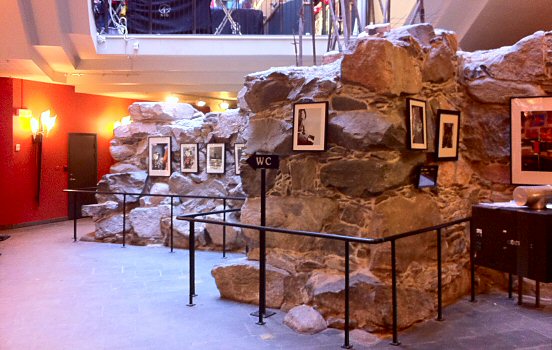 Remains of the wall at Biopalatset.
Remains of the wall at Biopalatset.
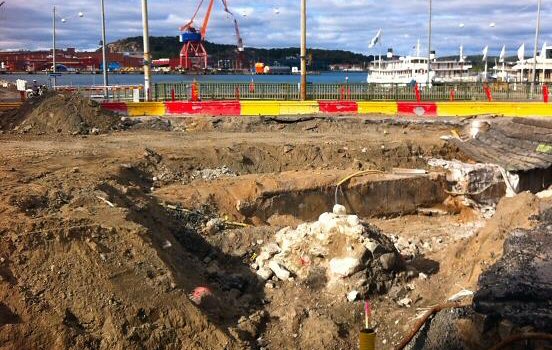 Remains of the wall excavated at Residensbron.
Remains of the wall excavated at Residensbron.
The underground areas
But there are more things hidden under the ground. I once climbed down there and walked along the muddy paths. They were once used as corpse storage due to the low temperature, and later used by fishmongers to cool down their fish before being sold from rafts in the moat (the early edition of Feskekôrka). German and Russian prisoners of war were supposedly kept in the narrow walkways.
 Underground walkway beneath Carolus Dux.
Underground walkway beneath Carolus Dux.
There is also a large chamber beneath Carolus Rex, where speleothem (soda straws) are hanging from the ceiling and the walls are covered with salt.
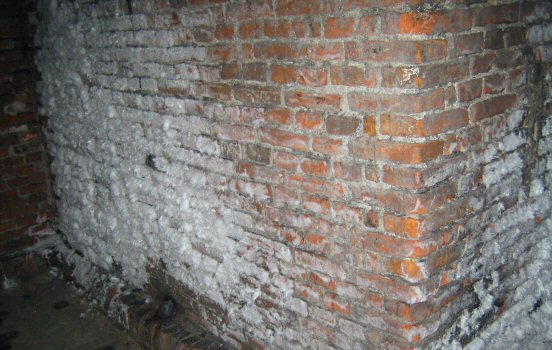 Salt on the wall in chamber beneath Carolus Rex.
Salt on the wall in chamber beneath Carolus Rex.
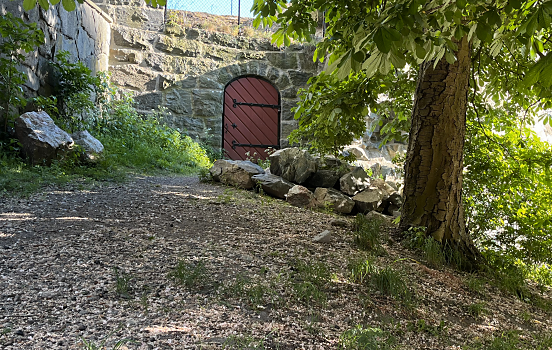 The inconspicuous entrance to the area beneath Carolus Rex.
The inconspicuous entrance to the area beneath Carolus Rex.
Tyska kyrkan
Tyska kyrkan (German Church) is also named Christinæ kyrka after queen Kristina, daughter of Gustav II Adolf who founded the city. It is located close to the big square where Gustav II Adolf poses as a statue.
 Tyska kyrkan with Ostindiska huset.
Tyska kyrkan with Ostindiska huset.
The first church on the location was initiated in 1623. Several fires devastated the building and the current version is the third one, with an impressive tower from 1783.
It is possible to walk up the tower, through eight floors of narrow stairs and dusty wooden beams.
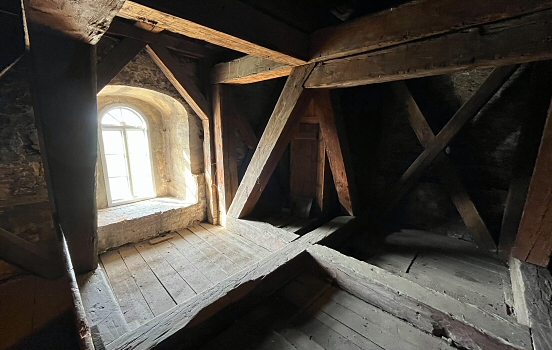 Inside the tower of Tyska kyrkan.
Inside the tower of Tyska kyrkan.
The bells can be heard all across the city at given times. There is also a set of smaller bells that plays a handful of melodies, such as Beethoven.
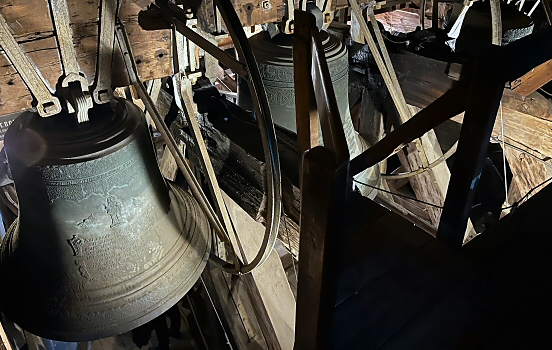 The bells in the tower of Tyska kyrkan.
The bells in the tower of Tyska kyrkan.
A notable thing to look for on the inside is the separate chamber behind the altar. That chamber holds the tomb of Rutger von Ascheberg, where he was buried in 1694. There are also several tombs beneath the church floor.
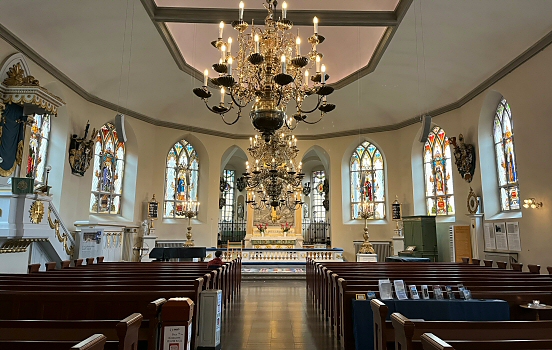 Tyska kyrkan, interior.
Tyska kyrkan, interior.
The building next door is Ostindiska huset, built in 1762 by the Swedish East India Company which was the largest trading company in Sweden during the 18th century.
Domkyrkan
The other prominent church tower in the inner city is Domkyrkan (Gothenburg Cathedral).
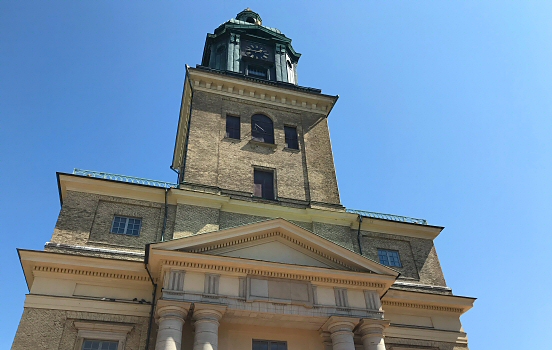 Domkyrkan exterior.
Domkyrkan exterior.
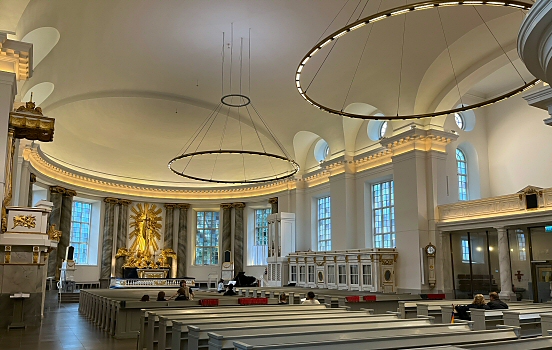 Domkyrkan interior.
Domkyrkan interior.
Three large bells share the space of the bell tower.
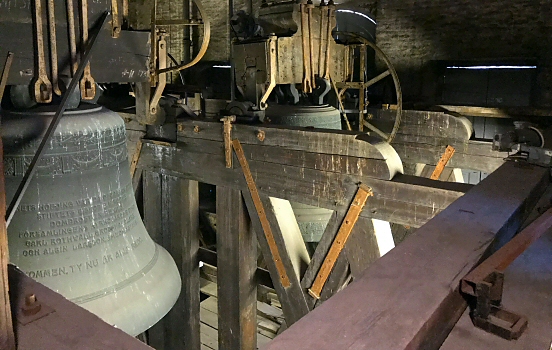 The bells in the tower of Domkyrkan.
The bells in the tower of Domkyrkan.
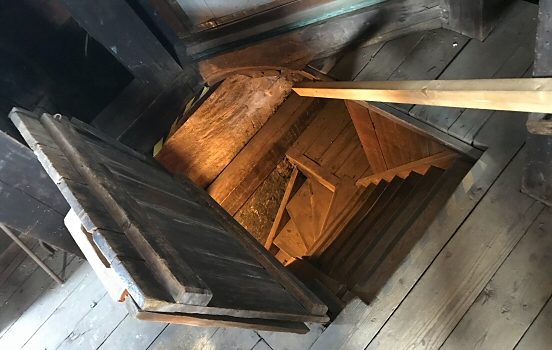 Stairs in the tower of Domkyrkan.
Stairs in the tower of Domkyrkan.
After 157 steps in narrow stairs, the reward is a nice view from the top.
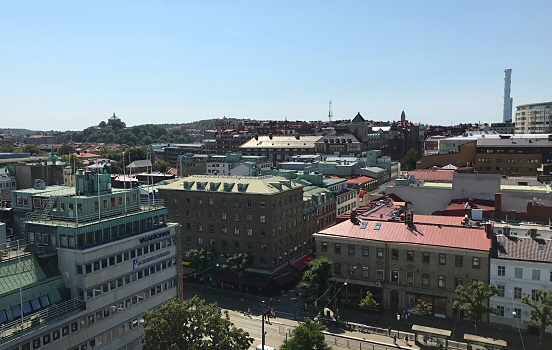 Eastern view from the tower of Domkyrkan.
Eastern view from the tower of Domkyrkan.
Skansen Kronan
Two twin bastions were build outside of the wall: Skansen Kronan (west) and Skansen Lejonet (east).
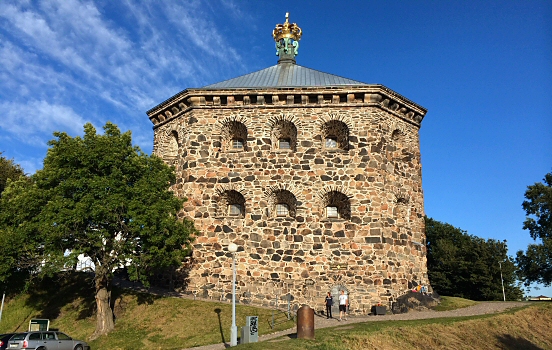 Skansen Kronan.
Skansen Kronan.
The hill where Skansen Kronan is situated has seen fortifications since 1640, starting with a simple wooden fort called Juteskrämman. Skansen Kronan itself was introduced in 1698 with 23 guns and very thick walls. Ironically the fortress was never attacked and the guns were never used until the fortress was decommissioned in 1806.
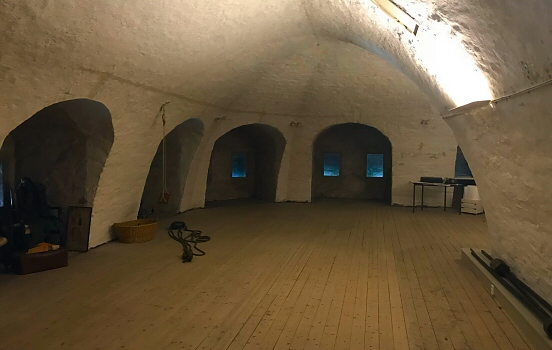 Top floor of Skansen Kronan.
Top floor of Skansen Kronan.
There was once a covered caponier from Carolus Rex to Skansen Kronan. The only trace of it today is the street on the same stretch, bearing its name (Kaponjärgatan).
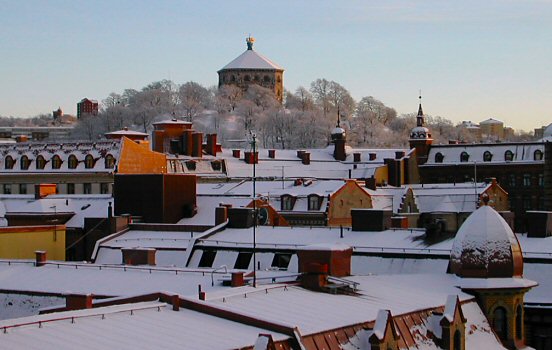 Skansen Kronan towers above the roofs of Linnéstaden.
Skansen Kronan towers above the roofs of Linnéstaden.
Skansen Lejonet
While its twin is quite accessible, Skansen Lejonet is not. You need to go by the less traveled road on the north side, or use half-hidden paths across the railway tracks.
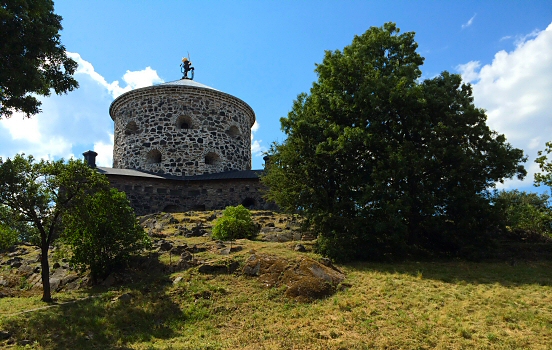 Skansen Lejonet.
Skansen Lejonet.
Skansen Lejonet is located on the hill Gullbergsklippan where Birger Jarl met with Håkon VI of Norway in 1253 to end the threat of Denmark. The first defense structure on the hill was built in 1303 and the tower structure we see today was inaugurated by Karl XI in 1689.
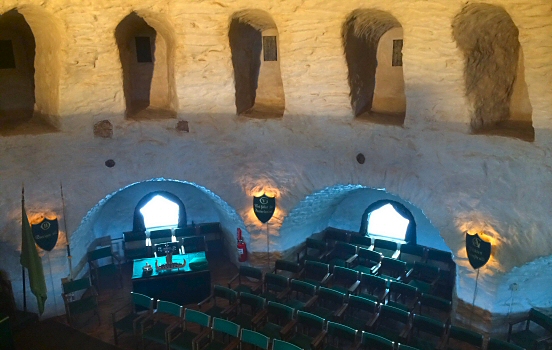 Ceremonial hall located on the top floor inside Skansen Lejonet.
Ceremonial hall located on the top floor inside Skansen Lejonet.
Oscar IIs fort
Named after King Oscar II in 1899, this fortified outpost inside Västerberget was part of Älvsborgs fästning, the last fortress located at the mouth of the river. A final bastion in an age when war was changing faster than stone could be laid.
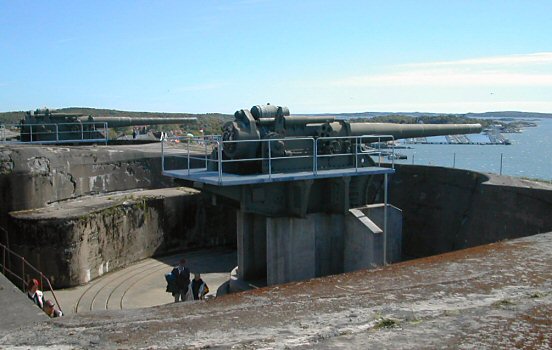 24 cm cannons at the fort.
24 cm cannons at the fort.
Ostindiefararen
This ship is a recreation of the original Ostindiefararen which was built in 1738. The original made three voyages from Gothenburg to Guangzhou and back, but on the last journey in 1745 it hit the infamous reef called Hunnebådan and sank, with the safe harbor just in sight.
The lost cargo was worth a fortune, filled to the brim with Chinese porcelain, spices, silk and tea buried at a depth of about eight meters. Some of the cargo was rescued, but most of it was still there when the wreck was rediscovered in 1984.
 Ostindiefararen with tourist boat Paddan.
Ostindiefararen with tourist boat Paddan.
Plans were made to build a replica and travel the same itinerary as the original. The construction started in 1995 and after the maiden voyage to China it returned to Gothenburg in 2007.
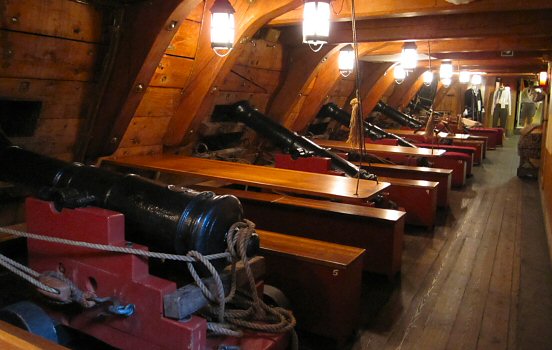 The cannons below deck.
The cannons below deck.
Gathenhielmska kulturreservatet
These protected buildings shows how the old residential area Majorna once looked before being replaced with modern buildings in the later part of 19th century.
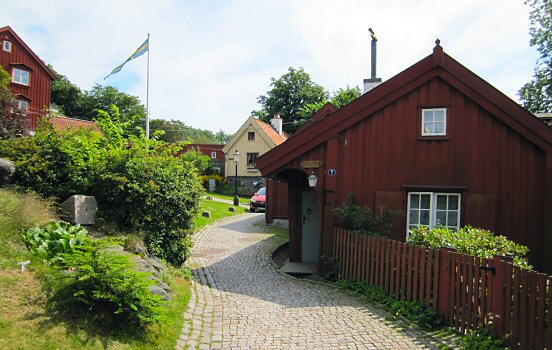 Pölgatan in Gathenhielmska kulturreservatet.
Pölgatan in Gathenhielmska kulturreservatet.
Feskekôrka
The building with the unorthodox name is an indoor fish market, even though it looks like some sort of gothic church. It has provided locals and tourists with all sorts of fish since 1874.
 Feskekôrka.
Feskekôrka.
Bohus fästning
While technically not part of Gothenburg, this fortress is an old favorite of mine and situated only a few meters from the border between Gothenburg and Kungälv.
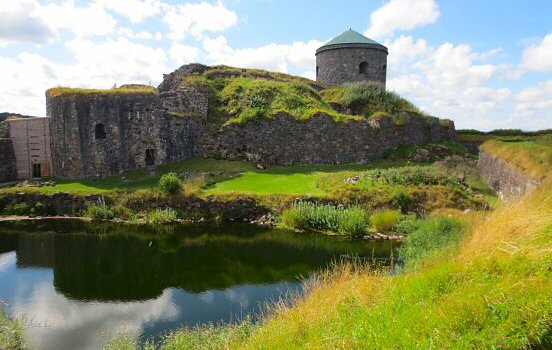 Bohus fästning.
Bohus fästning.
Construction began in 1308, initiated by King Håkon V of Norway. It was given to Sweden after the Treaty of Roskilde in 1658. The fortress was partly demolished in the 18th century and the removed stones were used for nearby houses and walls, still there today.
Related posts

2 comments
Leave a reply